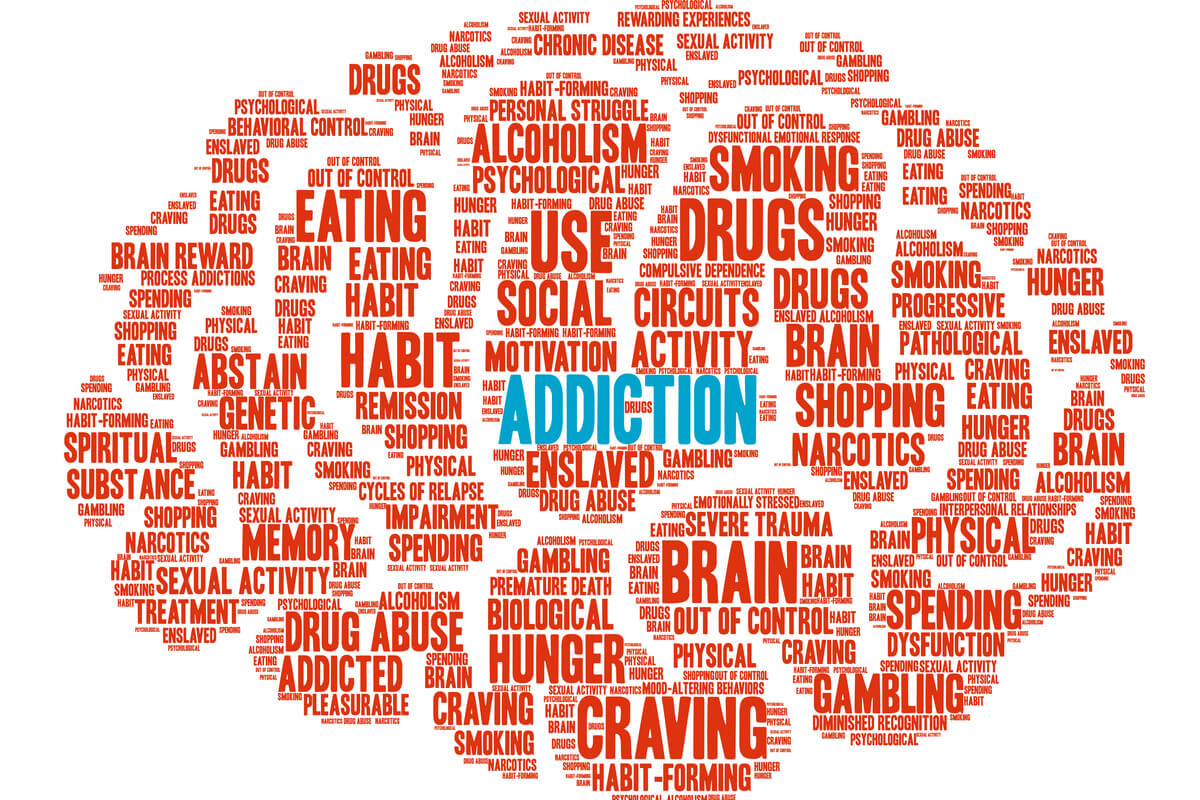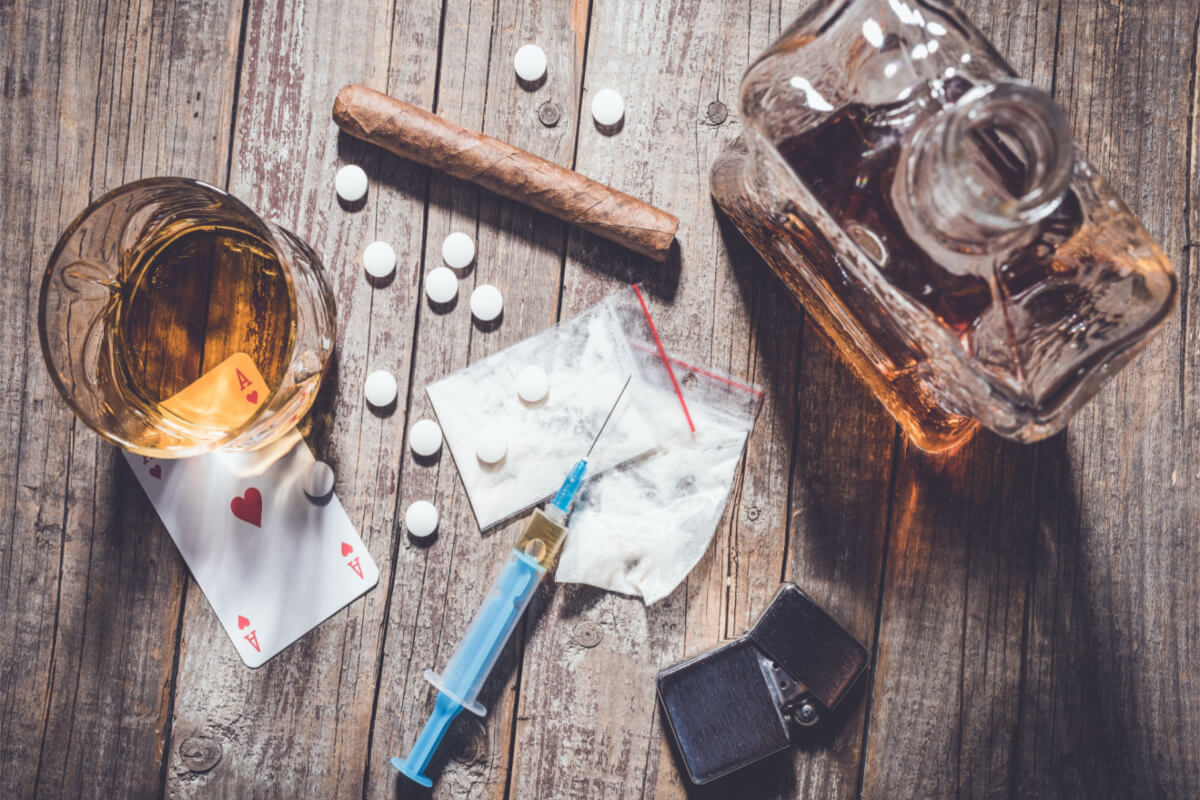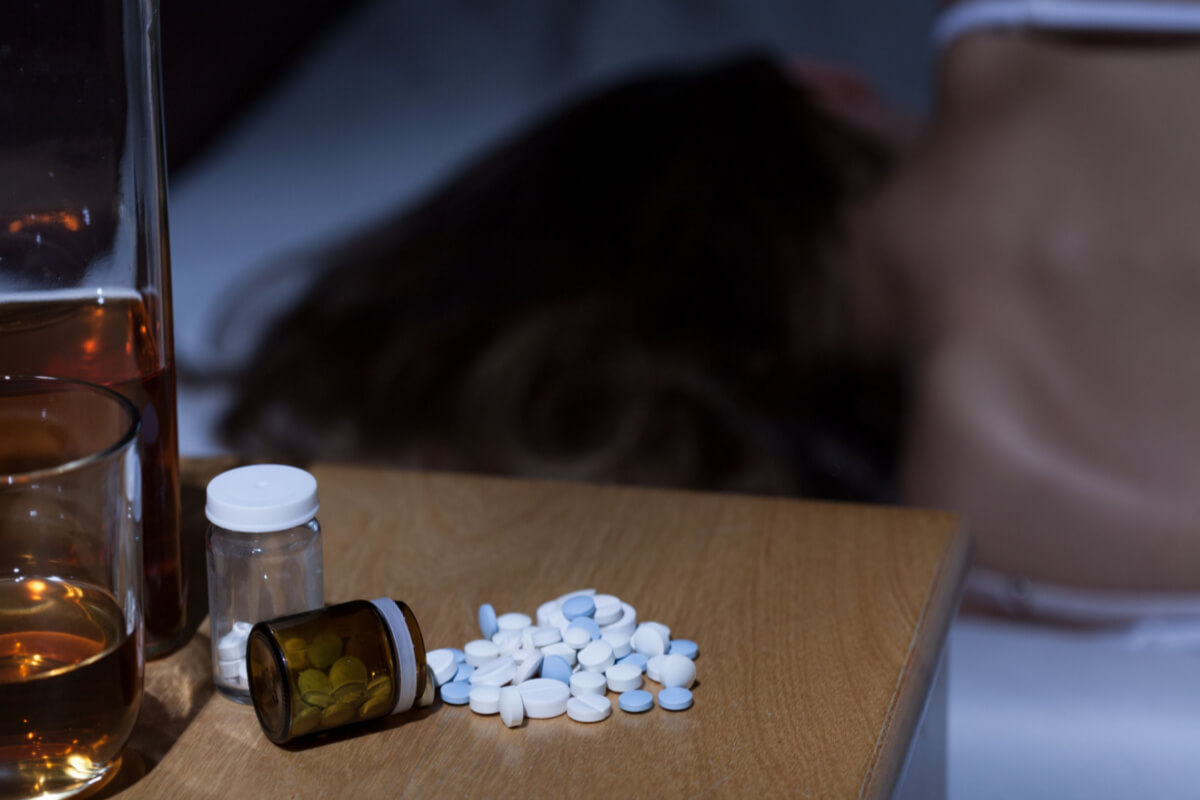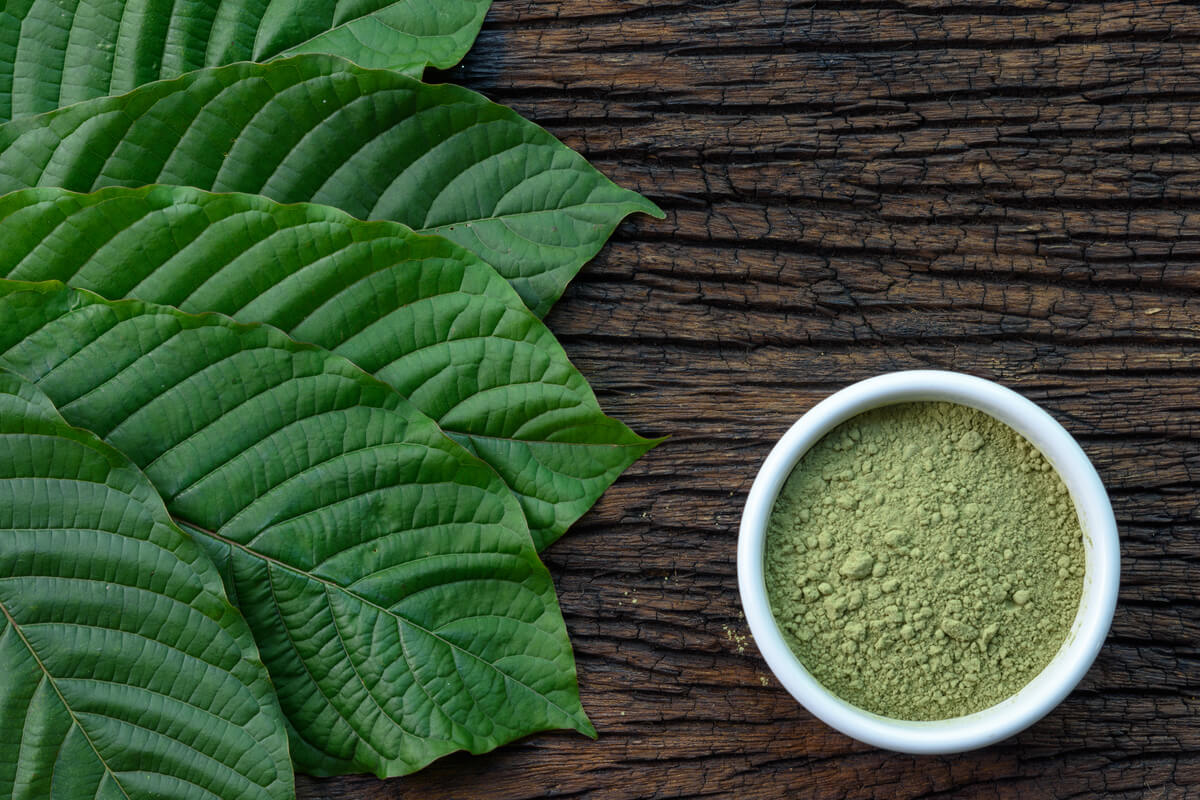
Substance use disorders (SUD) are a pervasive issue in the United States and around the world. These chronic disorders can damage every area of a person’s life from their work and financial life to their interpersonal relationships.
Medication for Addiction Treatment (MAT) can help people to manage their SUD and build a better future.
What Classifies Someone as Having Substance Use Disorder?
A substance use disorder (SUD) is a mental health disorder characterized by an inability to control one’s use of a substance. This loss of control can be with illicit substances, like heroin, but it might also be with legal substances, such as alcohol. [1]
The Diagnostic and Statistical Manual of Mental Disorders, Fifth Edition (DSM-5) contains detailed checklists doctors can use to diagnose SUD. Symptoms are grouped into the following categories, and can be determined with the following questions:[31]
· Impaired control: Do you take larger amounts and for longer than intended? Do you want to cut back but can’t? Do you spend a lot of time getting, using or recovering from drugs? Do you crave the drug?
· Social impairment: Do drugs keep you from meeting your school, work or family obligations? Do drugs cause social problems for you? Have you changed your recreational activities due to drug use?
· Risky use: Do you use drugs in physically unsafe environments? Do you keep using even though you’re aware drugs are causing harm?
· Pharmacologic: Do you need higher doses to get the effect you want? Do you feel withdrawal symptoms between doses?
Key Facts About Substance Use Disorders
Here are some notable key facts related to SUDs:
Key Facts
- In 2021, 61.2 million people in the United States used illicit drugs, representing 21.9% of the population.[3]
- In 2021, 9.2 million people misused opioids specifically.[3]
- In 2021, 46.3 million people met criteria for having a substance use disorder.[3]
- SUDs commonly co-occur with other mental health issues, such as depression and anxiety disorders.[1]
- More than 35 million people in the world have a substance use disorder.[6]
Latest Substance Use Disorder Statistics
These are current statistics about SUDs and their treatment within the United States:
- In 2023, 10.9% of eighth graders and 31.2% of 12th graders reported illicit drug use within the prior 12 months. This figure is dramatically lower than one recorded in 2021 during the COVID-19 pandemic.[27]
- In a poll conducted in July of 2023, 29% of adults said they or someone in their family had been addicted to opioids. The number was higher in rural areas, where 42% of adults said they’d experienced this issue themselves or seen it in a family member.[28]
- ·In 2022, nearly 111,000 Americans died due to fatal overdoses.[29]
- In 2023, fatal overdoses peaked at 112,000—the highest level ever recorded. Public health experts blame the presence of fentanyl for many of these deaths.[30]
What Are the Causes of Substance Use Disorders?
Substance use disorders are complex, and problems typically stem from multiple factors all working together. Understanding what they are can help you determine how to keep yourself and the people you love safe.
The Substance Abuse and Mental Health Services Administration places risk factors into the following groups:[32]
- Relationships: Parents who misuse alcohol, or who abuse their children or neglect them, raise SUD risks for their children.
- Communities: Living in an area with high levels of poverty and violence can increase risks.
- Society: Lax substance use laws, combined with poor economic opportunities and racism, can increase SUD risks.
What Are the Signs of Substance Use Disorders?
Some signs that a person may have a substance use disorder include the following:[2]
- Spending a significant portion of time getting drugs, using drugs, or recovering from drug use
- Failing to meet important responsibilities, such as those at work or school due to drug use
- Co-occurring mental health problems, such as depression or an anxiety disorder
- Legal problems, especially those related to drug offenses
- Monetary problems as the result of spending on drugs
- Withdrawal from social activities
- Changes in mood and behavior, especially becoming more paranoid and isolated
- Trying and failing to stop or reduce drug use
- Withdrawal symptoms when cutting back on drug use
- Intense cravings for the substance or obsessive thoughts about the next use of the substance
Substance Use Disorder Statistics by Country
Here are some noteworthy statistics about SUDs in the US as compared to other countries:
- Teens in the U.S. have higher rates of illicit drug use than European teens.[7]
- The U.S. has the highest mortality rate globally related to SUDs.[8]
- The U.S. has one of the highest rates of SUDs worldwide. Countries with comparable addiction rates include Greenland, the United Kingdom, Ireland, New Zealand, and Canada.[10]
Substance Use Disorder Statistics by Gender
There are some weak associations with gender as related to SUDs. Men are slightly more likely to use all types of illicit drugs. They are also more likely to experience fatal drug overdose than women. Women, however, are just as likely to develop a substance use disorder as men.[12] There are more men in treatment for SUD than women, at roughly a rate of 2:1. [12,13] Women transition from first using substances to a substance use disorder at a faster rate than men, and have poorer treatment outcomes than men.[12]
The reasons for some of these differences SUD between genders is likely a mix of cultural and biological factors. For example, culturally it may be more socially acceptable for men to engage in certain types of drug related behaviors than for women. Biologically, men may metabolize alcohol and other substances differently than women. However, the differences in gender related statistics surrounding SUD aren’t fully established or understood and require more research.
Substance Use Disorder Statistics by Age
Age is a factor in the development of SUD. Here are some statistics of SUD by age level:
- The decade with the highest rates of new SUD are people in their twenties. [14,16]
- AUD rates are highest for men at age 25 and for women at age 22. After that point, rates of AUD for both sexes decline [14]
- Among people with an SUD in the U.S. in 2021, the highest percentage was seen among those 18 to 25 years old at 25.6%. Among those 26 and older, the rate dropped to 16.1%
- The rate if SUD is approximately 8.5% for adolescents (ages 12–17).[16]
- Rates of developing SUDs generally decline with age [14]. That said, SUD is not limited to younger individuals; SUD is a notable contributing factor to death in people ages 65 and above.[15]
Key Substance Use Statistics
In the United States, some substances are much more commonly misused than others. Based on a 2021 survey of people ages 12 and older:[16]
- 54.7 million people used tobacco products in the prior month, including cigarettes.
- 13.2 million people vaped nicotine products in the prior month.
- 133.1 million Americans drank alcohol in the prior month.
- 36.4 million used marijuana in the prior month.
- 2.4 million misused prescription painkillers in the past month.
- 2.2 million misused hallucinogens in the past month.
- 1.8 million used cocaine in the prior month.
- 1.4 million misused prescription tranquilizers or sedatives in the prior month.
Fentanyl Overdose Statistics
One of those most deadly drugs to enter the U.S. black market has been fentanyl.
In 2021, fentanyl accounted for an estimated 67,325 preventable deaths in 2021. This represented a 26% increase compared to the prior year.[17]
Top States Battling Substance Use Disorder
The top states battling SUD are shown by their high rates of fatal drug overdose. Rates are listed as the number of deaths per 100,000 of the total population.[18]
These states have the highest rates of fatal drug overdose:
- West Virginia: 90.9
- Tennessee: 56.6
- Louisiana: 55.9
- Kentucky: 55.6
- Delaware: 54
- New Mexico: 51.6
- Ohio: 48.1
- Maine: 47.1
- Pennsylvania: 43.2
- Indiana: 43
The states have the lowest rates of fatal drug overdose per 100,000 population:[18]
- Nebraska: 11.4
- South Dakota: 12.6
- Iowa: 15.3
- Texas: 16.8
- North Dakota: 17.2
- Hawaii: 17.3
- Wyoming: 18.9
- Idaho: 19
- Montana: 19.5
- Utah: 21.1
The Impact of COVID & Remote Work on Substance Use Disorder
The COVID-19 pandemic and resulting social isolation was associated with a sharp rise in substance misuse and fatal overdose in the U.S.
Between April 2020 and April 2021 during the pandemic, 100,000 people died from issues related to substance misuse, which was a 12-month all-time high.[19]
As noted, one problem is that the pandemic isolated many individuals, which resulted in increased anxiety and depression. This may have exacerbated substance misuse across the population.
Additionally, remote work allowed some people to misuse drugs who normally wouldn’t have simply because they had more opportunity. One survey of 1,011 people found 25% reported participating in a Zoom or Microsoft Teams call while under the influence of drugs or alcohol.[19]
In response to these rising rates of addiction, officials expanded access to life-saving MAT therapies that included buprenorphine. In 2023, researchers said that this expanse did not result in an increase in buprenorphine-related deaths.[25]
As COVID concerns eased and lockdowns ended, high rates of drug use dipped too—particularly in young people. The drop in drug use rates between 2020 and 2021 was the largest decrease reported since the survey began in 1975. Those improvements held steady in 2022.[26]
Addiction Treatment Statistics
Treatment is the best path to recovery from a SUD. Depending on the SUD in question, comprehensive treatment may involve a combination of medications and therapy.
Here are some statistics on treatment for SUD:
- Medication for Addiction Treatment (MAT) is the recommended course of treatment for OUD and AUD.
- In 2020, only 13% of people who met criteria for treatment for SUD received it.[20]
- In 2020, only 11% of people with OUD who needed MAT with medications like Suboxone received that treatment.[20]
- In 2021, 94% of people with SUDs did not receive any formal treatment. [3]
- Relapse rates for SUD stand at between 40% and 60%, which is similar to relapse rates for other chronic disorders, such as asthma or diabetes.[22]
How to Get Help for Substance Use Disorder
If you have a SUD, rest assured that treatment can help. Every day, people recover from SUD and begin to rebuild their lives. With appropriate assistance, you can leave substance misuse in your past.
Start by reaching out to an addiction treatment specialist. At Bicycle Health, we offer MAT for OUD. Suboxone is considered the gold standard in treatment for OUD, managing withdrawal symptoms and opioid cravings, so you can focus on recovery. .[23,24]
If you think Suboxone might be right for you, reach out to us today. We can meet with you via our telehealth services. And we can often get you a same-day prescription for Suboxone as appropriate.

Medically Reviewed By Peter Manza, PhD
Peter Manza, PhD received his BA in Psychology and Biology from the University of Rochester and his PhD in Integrative Neuroscience at Stony Brook University. He is currently working as a research scientist in Washington, DC. His research focuses on the role ... Read More
- Substance use and co-occurring mental disorders. National Institute of Mental Health. Published March 2023. Accessed August 15, 2023. https://www.nimh.nih.gov/health/topics/substance-use-and-mental-health
- Hasin DS, O’Brien CP, Auriacombe M, et al. DSM-5 criteria for substance use disorders: recommendations and rationale. Am J Psychiatry. 2013;170(8):834-851. doi:10.1176/appi.ajp.2013.12060782
- SAMHSA announces National Survey on Drug Use and Health (NSDUH) results detailing mental illness and substance use levels in 2021. U.S. Department of Health and Human Services. Published January 4, 2023. Accessed August 15, 2023. https://www.hhs.gov/about/news/2023/01/04/samhsa-announces-national-survey-drug-use-health-results-detailing-mental-illness-substance-use-levels-2021.html
- Fentanyl awareness. United States Drug Enforcement Administration. Accessed August 23, 2023. https://www.dea.gov/fentanylawareness
- Kendler KS, Sundquist K, Ohlsson H, et al. Genetic and familial environmental influences on the risk for drug abuse: A national Swedish adoption study. Arch Gen Psychiatry. 2012;69(7):690-697. doi:10.1001/archgenpsychiatry.2011.2112
- World Drug Report 2019: 35 million people worldwide suffer from drug use disorders while only 1 in 7 people receive treatment. United Nations. Published June 26, 2019. Accessed August 23, 2023. https://www.unodc.org/unodc/en/frontpage/2019/June/world-drug-report-2019_-35-million-people-worldwide-suffer-from-drug-use-disorders-while-only-1-in-7-people-receive-treatment.html
- Compared with Europe, American teens have high rates of illicit drug use. University of Michigan. Published September 23, 2016. Accessed August 23, 2023. https://news.umich.edu/compared-with-europe-american-teens-have-high-rates-of-illicit-drug-use/
- The burden of drug use disorders. Pan American Health Organization. Published 2019. Accessed August 23, 2023. https://www.paho.org/en/enlace/burden-drug-use-disorders
- World Drug Report 2022. United Nations. Published 2022. Accessed August 23, 2023. https://www.unodc.org/unodc/en/data-and-analysis/world-drug-report-2022.html
- Ritchie H and Roser M. Drug use. Our World in Data. Published December 2019. Accessed August 23, 2023. https://ourworldindata.org/drug-use
- International Narcotics Control Strategy Report. United States Department of State, Bureau of International Narcotics and Law Enforcement Affairs. Published March 2022. Accessed August 23, 2023. https://www.state.gov/wp-content/uploads/2022/03/22-00767-INCSR-2022-Vol-1.pdf
- Sex and gender differences in substance use disorder treatment. National Institute on Drug Abuse. Published April 13, 2021. Accessed August 23, 2023. https://nida.nih.gov/publications/research-reports/substance-use-in-women/sex-gender-differences-in-substance-use-disorder-treatment
- McHugh RK, Votaw VR, Sugarman DE, Greenfield SF. Sex and gender differences in substance use disorders. Clin Psychol Rev. 2018;66:12-23. doi:10.1016/j.cpr.2017.10.012
- Vasilenko SA, Evans-Polce RJ, Lanza ST. Age trends in rates of substance use disorders across ages 18-90: Differences by gender and race/ethnicity. Drug Alcohol Depend. 2017;180:260-264. doi:10.1016/j.drugalcdep.2017.08.027
- Koechl B, Unger A, Fischer G. Age-related aspects of addiction. Gerontology. 2012;58(6):540-544. doi:10.1159/000339095
- Key Substance Use and Mental Health Indicators in the United States: Results from the 2021 National Survey on Drug Use and Health. Substance Abuse and Mental Health Services Administration. Published December 2022. Accessed August 28, 2023. https://www.samhsa.gov/data/sites/default/files/reports/rpt39443/2021NSDUHFFRRev010323.pdf
- Drug overdoses. NSC. Accessed August 25, 2023. https://injuryfacts.nsc.org/home-and-community/safety-topics/drugoverdoses/data-details/
- Drug overdose mortality by state. Centers for Disease Control and Prevention. Published March 1, 2021. Accessed August 25, 2023. https://www.cdc.gov/nchs/pressroom/sosmap/drug_poisoning_mortality/drug_poisoning.htm
- Lin G. Substance abuse got worse amid the pandemic and remote work. SHRM. Published December 17, 2021. Accessed August 15, 2023. https://www.shrm.org/resourcesandtools/hr-topics/benefits/pages/substance-abuse-got-worse-amid-pandemic-and-remote-work.aspx
- Making addiction treatment more realistic and pragmatic: The perfect should not be the enemy of the good. National Institute on Drug Abuse. Published January 4, 2022 Accessed August 15, 2023. https://nida.nih.gov/about-nida/noras-blog/2022/01/making-addiction-treatment-more-realistic-pragmatic-perfect-should-not-be-enemy-good
- Principles of drug addiction treatment: A research-based guide (third edition). National Institute on Drug Abuse. Published January 2014. Accessed August 18, 2023. https://nida.nih.gov/sites/default/files/podat-3rdEd-508.pdf
- Treatment and Recovery. National Institute on Drug Abuse. Published March 9, 2023. Accessed August 15, 2023. https://nida.nih.gov/publications/drugs-brains-behavior-science-addiction/treatment-recovery
- Velander JR. Suboxone: Rationale, science, misconceptions. Ochsner J. 2018;18(1):23-29.
- Shulman M, Wai JM, Nunes EV. Buprenorphine treatment for opioid use disorder: An overview. CNS Drugs. 2019;33(6):567-580. doi:10.1007/s40263-019-00637-z
- Tanz L, Jones C, Davis N. Trends and characteristics of buprenorphine-involved overdose deaths prior to and during the COVID-19 pandemic. JAMA. 2023;6(1): e2251856. https://jamanetwork.com/journals/jamanetworkopen/fullarticle/2800689
- COVID-19 and Substance Use. National Institute on Drug Abuse. Published November 2023. Accessed January 16, 2024. https://nida.nih.gov/research-topics/covid-19-substance-use#increase
- Reported drug use among adolescents continued to hold below pre-pandemic levels in 2023. National Institutes of Health. Published December 13, 2023. Accessed January 16, 2024. https://www.nih.gov/news-events/news-releases/reported-drug-use-among-adolescents-continued-hold-below-pre-pandemic-levels-2023
- Sparks G, Montero A, Kirzinger A, et al. KFF tracking poll July 2023: Substance use crisis and accessing treatment. KFF. Published August 15, 2023. Accessed January 16, 2024. https://www.kff.org/other/poll-finding/kff-tracking-poll-july-2023-substance-use-crisis-and-accessing-treatment/
- A proclamation on National Youth Substance Use Prevention Month, 2023. The White House. Published September 29, 2023. Accessed January 16, 2024. https://www.whitehouse.gov/briefing-room/presidential-actions/2023/09/29/a-proclamation-on-national-youth-substance-use-prevention-month-2023/
- Mann B, Pattani A. In 2023 fentanyl overdoses ravaged the U.S. and fueled a new culture war fight. National Public Radio. Published December 28, 2023. Accessed January 16, 2024. https://www.npr.org/2023/12/28/1220881380/overdose-fentanyl-drugs-addiction
- DSM-5 criteria for diagnosing and classifying substance use disorders. Substance Use Screening and Risk Assessment in Adults. Published October 2020. Accessed January 16, 2024. https://www.ncbi.nlm.nih.gov/books/NBK565474/table/nycgsubuse.tab9/
- Risk and protective factors. Substance Abuse and Mental Health Services Administration. Published July 18, 2019. Accessed January 16, 2024. https://www.samhsa.gov/sites/default/files/20190718-samhsa-risk-protective-factors.pdf
Download Our Free Program Guide
Learn about our program, its effectiveness and what to expect
Related articles
Imagine what’s possible on the other side of opioid use disorder.
Our science-backed approach boasts 95% of patients reporting no withdrawal symptoms at 7 days. We can help you achieve easier days and a happier future.









